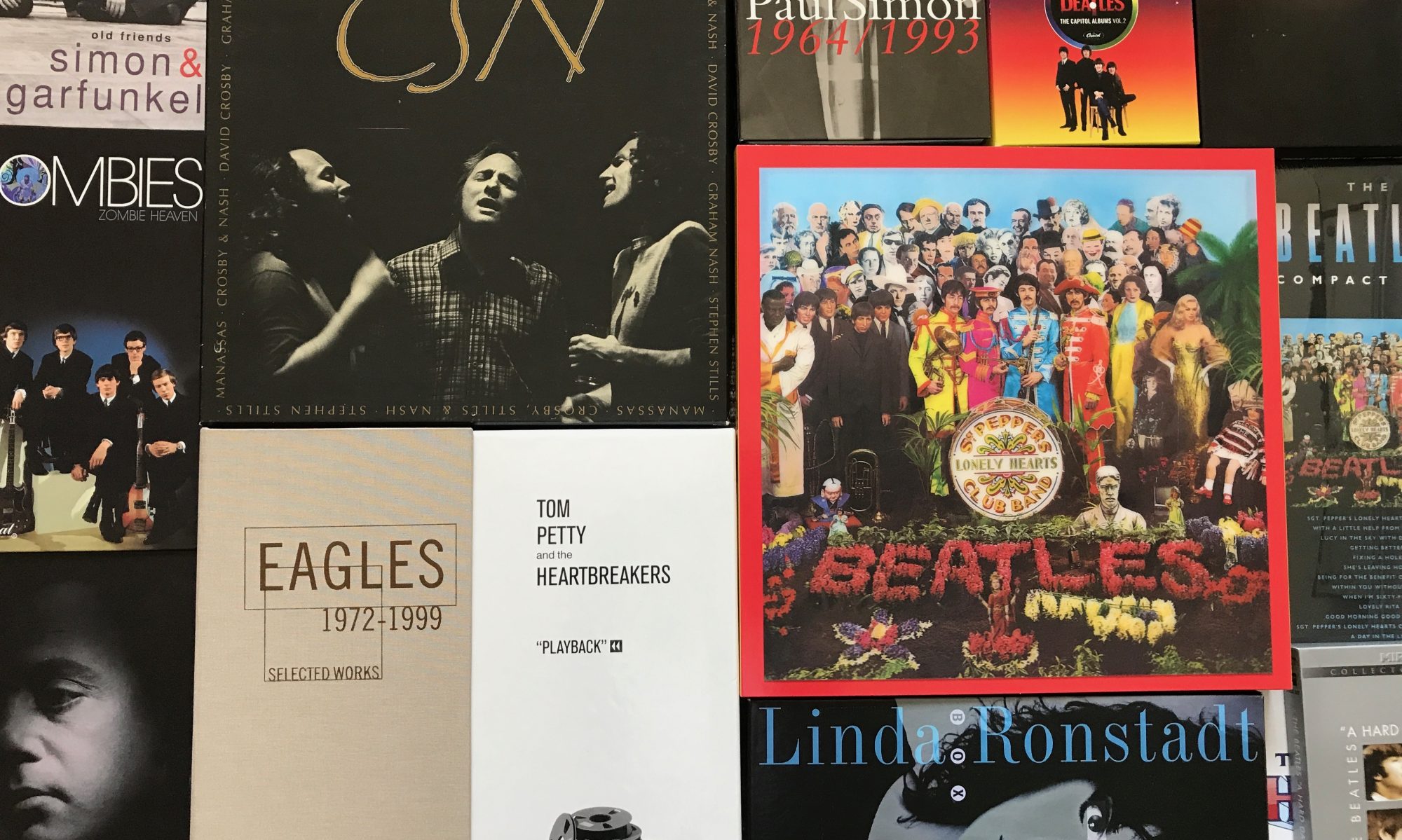We started hearing about Joni Mitchell through her songwriting.
Judy Collins had her first and biggest hit with Mitchell’s “Both Sides Now” in 1968. That same year, a folk singer from New England, Tom Rush, released an album called The Circle Game. That’s a Joni Mitchell song she hadn’t even recorded yet. The album also included Mitchell’s “Urge For Going”. This album is where we first heard Joni’s two excellent songs, plus it had songs by then little-known songwriters James Taylor and Jackson Browne. For good measure, the cover photo was by Linda Eastman (McCartney to be).
It was time for Joni Mitchell to become appreciated for her performing, as well as her songwriting. Enter David Crosby.
Mitchell was mostly known in her native Canada, and she’d been working the folk circuit on the East Coast. David Crosby heard her, was impressed, and convinced her to move to Los Angeles. Crosby then introduced her to manager Elliot Roberts, and her recording career began.
From 1968 to 1970, she released three albums… Song To A Seagull (1968), Clouds (1969) and Ladies Of The Canyon (1970).
The third album was the charm, as it contained her first song to get significant airplay, “Big Yellow Taxi” with the famous line “They paved paradise, put up a parking lot”. The album (which was the first of her albums we bought) also finally gave us Mitchell’s recording of “The Circle Game”. The song was a response to fellow Canadian Neil Young’s “Sugar Mountain”.
 Then in 1971 came one of the most critically acclaimed albums ever…Blue. Joni Mitchell had just come off two of the strongest relationships in her life, with Graham Nash, and then James Taylor. The result is a very personal and raw set of songs many critics hail as a landmark for singer-songwriters. Songs that got the most attention include “Carey”, “California”, “River” and “A Case Of You”.
Then in 1971 came one of the most critically acclaimed albums ever…Blue. Joni Mitchell had just come off two of the strongest relationships in her life, with Graham Nash, and then James Taylor. The result is a very personal and raw set of songs many critics hail as a landmark for singer-songwriters. Songs that got the most attention include “Carey”, “California”, “River” and “A Case Of You”.
Far be it from me to swim against the tide of critical praise, but I actually prefer her next two albums…For The Roses and Court And Spark. The difference is that while she continued writing great lyrics, she wrote even better melodies (overall), and added more sophisticated arrangements and vocals.
For The Roses, from 1972, includes Joni’s first Top 40 hit “You Turn Me On, I’m A Radio”. She was having fun with the idea that she needed to write a song that would get radio play. Other standout tracks include “For The Roses”, “Barangrill”, “See You Sometime”, “Blonde In The Bleachers”, and “Electricity”. The arrangements include a little more rock, with Stephen Stills on guitar, and some touches of Jazz. Quoting the New York Times: “Each of Mitchell’s songs on For the Roses is a gem glistening with her elegant way with language, her pointed splashes of irony and her perfect shaping of images. She’s a songwriter and singer of genius who can’t help but make us feel we are not alone.” It’s her only album that has been chosen by The Library Of Congress to be in the National Recording Registry. Here’s a really good outtake from the cover shoot:
Court And Spark, from 1974, is her most popular and best-selling album. It includes her biggest hit “Help Me” (#7), as well as “Free Man In Paris” (#22), “Raised On Robbery”, “Court And Spark”, and Grammy winner “Down To You” (Best Arrangement). The influences of rock, pop, and jazz are strong. Critics liked it too, and it’s listed at number 111 on Rolling Stone’s Top 500 Albums. Blue is number 30 on that list…the highest ranking album by a female. (Update: In 2020 Blue was moved all the way up to #3 in a radical/unrealistic reworking of the list.)
It was after 1974 that Joni Mitchell began exiting the mainstream. Maybe she had proven all she wanted in folk and pop music, because she moved away from commercially popular music and turned to the niche of Jazz. She still produced some critically praised albums, and at times returned to pop, but had no major sellers.
 In 1996 she released Hits, a well chosen collection of her most popular recordings. If you don’t have her other albums, this is the one to get.
In 1996 she released Hits, a well chosen collection of her most popular recordings. If you don’t have her other albums, this is the one to get.
 (All of the songs are copyrighted from the 1966 through 1973, except one from 1982 and one from 1991.)
(All of the songs are copyrighted from the 1966 through 1973, except one from 1982 and one from 1991.)
Joni Mitchell also continued her drawing and painting, and is considered an excellent artist. She did the cover art on many of her albums (including those first three). One of my favorites is the cover for Crosby, Stills, Nash & Young’s So Far album.
 Like John Lennon, she can capture so much with seemingly simple line drawings. And like Bob Dylan, Joni Mitchell has had a major influence on other songwriters.
Like John Lennon, she can capture so much with seemingly simple line drawings. And like Bob Dylan, Joni Mitchell has had a major influence on other songwriters.











